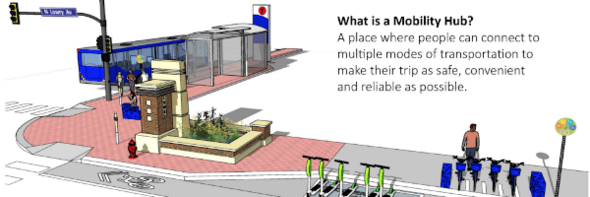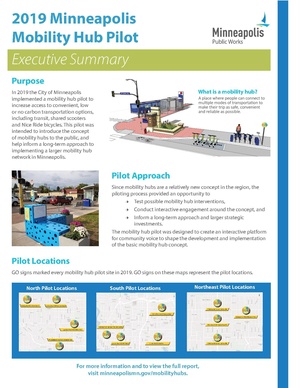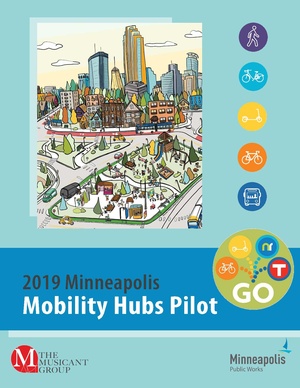Minneapolis Mobility Hubs: Difference between revisions
No edit summary |
No edit summary |
||
| Line 11: | Line 11: | ||
|updated=2022-02-03 | |updated=2022-02-03 | ||
}} | }} | ||
[[File:wcmsp-224821.pdf|300px|2020 Minneapolis Mobility Hubs Summary]] [[File:wcmsp-224822.pdf|300px|2019 Minneapolis Mobility Hubs Pilot]] [[File:Mobility-Hub-Pilot-2020.pdf|300px|2020 Minneapolis Mobility Hubs Pilot]] | [[File:wcmsp-224821.pdf|300px|2020 Minneapolis Mobility Hubs Summary]] [[File:wcmsp-224822.pdf|300px|2019 Minneapolis Mobility Hubs Pilot]] [[File:Mobility-Hub-Pilot-2020.pdf|300px|2020 Minneapolis Mobility Hubs Pilot]] | ||
Revision as of 21:35, July 12, 2022
| Minneapolis Mobility Hubs | |
 Minneapolis Mobility Hubs | |
| Team Organizations | MetroTransit Lyft Spin Lime Hennepin County MnDOT |
| Point of Contact | Danielle Elkins |
| Participating Municipalities | Minneapolis MN |
| Sectors | Transportation |
| Initiative | |
| Status | Launched |
| Last Updated | December 5, 2025 |
Summary
In 2019, the City of Minneapolis launched a mobility hub pilot program to increase access to convenient, low or no carbon transportation options, including transit, shared scooters and Nice Ride bicycles.
Mobility Hubs are called out as an action to formulate public-private partnerships to implement innovative, ambitious and scalable pilots within the Minneapolis Transportation Action Plan. See action 3.1 within the Technology topic of the plan. 2020 Mobility Hubs
Mobility Hub locations in 2020 have built upon the 2019 network, adding an additional 13 hubs to total 25 locations, including seven locations from 2019. Mobility Hubs are now located in 14 neighborhoods, throughout North, Northeast, South, downtown and the West Bank of Minneapolis.
The Minneapolis Transportation Action Plan for 2020 provides context for this project



